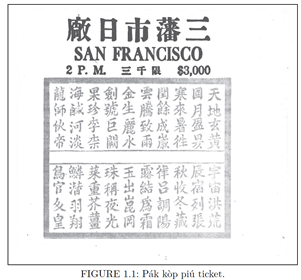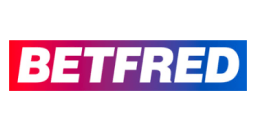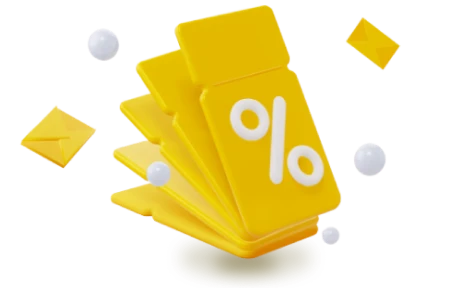Is Keno Like Bingo?
While sharing roots in number selection and matching for rewards, the exploration into keno vs bingo reveals significant differences. We offer insight into the nuanced dynamics of both, their cultural significance, evolution, and answers to the most popular questions.
A former The Guardian journalist, Raj Patel, concluded once that tabletop games may teach patience and the “unpredictable nature of life itself”. If so, then keno, by its nature, is a fine teacher offering both lessons. As, though, is bingo. Among the myriad casino games, these strike not just for their simplicity and accessibility but also for their storied pasts. While both games revolve around the random drawing of numbers and share a common objective — to match these numbers for a prize — their nuances and dynamics present a curious divergence. This divergence raises the question: how similar are keno and bingo, and what distinguishes one from the other? This article explores these questions by discovering each game’s origins, rules, and cultural significance, thereby shedding light on their identities. By comparing and contrasting keno and bingo, we seek to understand their mechanics and place in the wider context of gaming and society.
What is Keno, and What is Bingo
Before answering the posed question, let us recall the bases.
As a table game of chance, keno involves players choosing numbers from a set, traditionally between 1 and 80. After all players make their selections, a predetermined number of these, typically 20, are randomly drawn. The game aims to match the chosen numbers with the drawn ones. The more a player’s numbers coincide, the greater their potential winnings. As in bingo, keno’s particularity lies in training players’ composure and relying on fortune.
Similarly, both games have long remained a staple in brick-and-mortar casinos and have adapted to contemporary online versions. However, to get a clearer picture of what distinguishes them and whether keno and bingo are siblings, twins, or second cousins twice removed, the history of their appearance is the first place to start.
Keno-Bingo History
The origins of keno can be traced back to the 3rd century BCE in China. It was believed to have been created to fund significant state projects, such as the Great Wall of China:
Legend holds that Chéung Léung (205–187 BCE), of the Han Dynasty, devised an early ancestor of keno to raise money for the army and for the defense of the capital, at a time when funds were low. This guessing game called for players to choose 8 Chinese characters from 120; the risk to the players was small and the rewards for a correct selection were great. The game was a success from the start; within a few decades, the operators’ wealth was said to be boundless.
(Bollman 1)
As for the bingo, there are no records confirming that Asian leaders invented the game or that it had any financial-military implications. In contrast, bingo’s roots trace back to the post-Renaissance Genoese lottery, thoroughly described in this article.
Pàk kòp piú ticket image (Bollman 2)
Tuning back to keno, 22 centuries later, the game turned to be known as baige piao, pàk kòp piú or ‘white pigeon ticket’. The reason for involving homing pigeons in the gameplay was that before the 19th century, the lottery was illegal in China. Therefore, the birds’ task was transporting wagers and winnings between players and operators.
It was mentioned previously that both of the keno ancestors — the Chéung Léung’s version and pàk kòp piú — featured characters instead of numbers. They were taken from The Thousand Character Text — Qianziwen — a popular primary age-children teaching poem used at the time.
Later, around the 1850s, the game was brought to the United States by the Chinese immigrants constructing the Transcontinental Railroad. At that time, the major American market was in Montana because of Chinese mining workers who toiled there. Keno then transitioned roughly 900 miles South to Nevada, which legalised gambling in 1930. Then and there, it became called racehorse keno, which helped it not to become a subject of scrutiny for anti-lottery regulators (remaining in effect on paper). In addition to the name, characters underwent modifications too — reduced to 80 and attributed the names of made-up racehorses. Each horse was labelled with a number (1-80), and it was not until 1951, with a new tax on off-track betting introduced in Nevada, that horse names were dropped, and only numbers remained (Bollman 6). This evolution helped keno to become integrated into the American gambling culture, especially within casinos.
Conversely, bingo’s evolution occurred across Europe, with different names and rules, too. Still, in the US, Southern this time, the game transformed from Beano to Bingo in the 1920s. Largely thanks to Edwin S. Lowe, a toy salesman who encountered the game at a carnival and saw its potential. Lowe’s adaptation turned bingo into a significant fundraiser, especially during the Great Depression.
It is thus clear that both game variations developed in the version we know them today, largely in the US. However, they originated continents apart: in Asia and the Mediterranean Europe. Both keno and bingo became staples in their respective communities and Northern America. So far, the historical similarities and differences hold an equal count. Addressing their gameplay may cast a clearer light on whether to put a sign “equal” or “not equal” in the keno-bingo debate.
How to Play Keno
To play contemporary keno is to follow a simple set of steps:
 Selection of Numbers
Selection of Numbers Choose your preferred number from a grid of 1 to 80. The quantity varies. You may opt for just one number or choose up to 20.
 Placing of Bets
Placing of Bets After selecting numbers, place your bets. The wager amounts can vary, offering flexibility.
 Drawing of Numbers
Drawing of Numbers The game starts with randomly drawing 20 numbers. This can be conducted through a ball machine or electronically, depending on whether you play keno online or physically.
 Comparison and Payouts
Comparison and Payouts Compare the drawn numbers with your selections. Payouts are determined by the number of matches, with more matches resulting in higher rewards.
Keno VS Bingo
To adequately address whether keno is like bingo, there is no better way to confront their features visually. These are, starting with resemblances:
| Aspect | Keno | Bingo |
|---|---|---|
| Number selection | Numbers are randomly drawn | Numbers are randomly drawn |
| Gameplay | Players mark off numbers on a card | Players mark off numbers on a card |
| Location | Played in casinos and online | Played in community halls and online |
On the contrary, what sets them apart is:
| Aspect | Keno | Bingo |
|---|---|---|
| How numbers are chosen | Players choose their numbers | Numbers are pre-assigned on cards |
| Number of draws | 20 numbers are drawn | The number of draws continues until a winning pattern emerges |
| Winners | Determined by the number of matches | Determined by completing specific patterns |
| Pace | Flexible pace, players decide when to play | Fixed pace, dictated by the caller or game host |
References
- Bollman, Mark. Mathematics of Keno and Lotteries. Taylor & Francis Group, 2018.
- Budd, Pat. Be A Winner At Keno. Smashwords, 2011.
- Kaye, Marvin. The Story of Monopoly, Silly Putty, Bingo, Twister, Frisbee, Scrabble, Etcetera. Stein & Day, 1992.
- Keno, revised and updated by William L. Horsch. Encyclopaedia Britannica, February 15, 2024. https://www.britannica.com/topic/keno. Accessed March 29, 2024.






